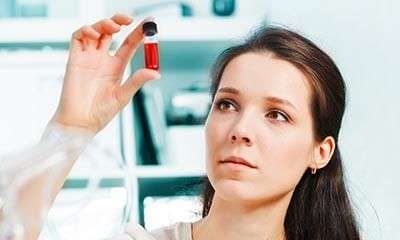This year's pledge on dietetics day is anemia mukt bharat. Spread this msg to all
Anemia happens when your body doesn't have enough red blood cells. The condition is mainly caused by blood loss, the destruction of red blood cells, or your body's inability to create enough red blood cells.
There are many types of anemia. The most common type is iron deficiency anemia. Red blood cells contain a protein called hemoglobin. Hemoglobin is full of iron. Without sufficient iron, your body can't make the hemoglobin it needs to create enough red blood cells to deliver oxygen-rich blood throughout your body.
A lack of folate and vitamin b-12 may also impact your body's ability to made red blood cells. If your body can't process b-12 properly, you may develop pernicious anemia. A diet that is rich in iron and b vitamins like the plan below is important if you are anemic. Be sure to talk to your doctor about supplements as well.
Anemia treatment plans often include dietary changes. The best diet plan for anemia includes foods rich in iron and other vitamins essential to hemoglobin and red blood cell production. It should also include foods that help your body absorb iron better.
There are two types of iron in foods: heme iron and nonheme iron. Heme iron is found in meat, poultry, and seafood. Nonheme iron is found in plant foods and foods fortified with iron. Your body can absorb both types, of iron.
Although anemia treatment plans are individualized, most require 150 to 200 milligrams of iron daily. It's hard to get these levels through diet alone. You may also need to take prescription iron or an over-the-counter iron supplement until your levels are replenished.
Add these foods to your diet to get more iron and help fight iron deficiency anemia:
1. Leafy greens
Leafy greens, especially dark ones, are among the best sources of nonheme iron. They include:
Some leafy greens such as Swiss chard and collard greens also contain folate. A diet low in folate may cause folate-deficiency anemia. Citrus fruits, beans, and whole grains are good sources of folate.
When eating dark, leafy greens for iron, there's a catch. Some greens that are high in iron, such as spinach and kale, are also high in oxalates. Oxalates are compounds that prevent the absorption of nonheme iron. So, while it's beneficial to eat your greens as part of an overall anemia diet, don't depend on them solely to treat the condition.
Vitamin c helps your stomach absorb iron. Eating leafy greens with foods that contain vitamin c such as oranges, red peppers, and strawberries may increase iron absorption. Some greens are good sources of both iron and vitamin c.
2. Meat and poultry
All meat and poultry contain heme iron. Red meat, lamb, and venison are the best sources. Poultry and chicken have lower amounts. Eating meat or poultry with nonheme iron foods, such as leafy greens, can increase iron absorption.
3. Liver
Many people shy away from organ meats, but they're a great source of iron. Liver is arguably the most popular organ meat. It's rich in iron and folate.
4. Seafood
Some seafood provides heme iron. Shellfish such as oysters, clams, and shrimp are good sources. Most fish contain iron. Fish high in iron include:
- Sardines, canned in oil
- Canned or fresh tuna
- Fresh salmon
Although both fresh and canned salmon are good sources of iron, canned salmon is high in calcium. Calcium binds with iron and reduces its absorption. Foods high in calcium shouldn't be eaten at the same time as iron-rich foods. Other examples of calcium-rich foods include:
5. Fortified foods
Many foods are fortified with iron. Add these foods to your diet if you're a vegetarian or struggle to eat other sources of iron:
- Fortified, ready-to-eat cereals
- Foods made from fortified refined flour such as white bread
- Fortified pasta
- Foods made from fortified cornmeal
- Fortified white rice
6. Beans
Beans are good sources of iron for vegetarians and meat eaters alike. They're also inexpensive and versatile. Some iron-rich options are:
- Kidney beans
- Chickpeas
- Soybeans
- Black-eyed peas
- Pinto beans
- Black beans
- Peas
- Lima beans
7. Nuts and seeds
Many types of nuts and seeds are good sources of iron. They taste great on their own or sprinkled on salads or yogurt. When choosing nuts and seeds, choose raw varieties whenever possible. Some nuts and seeds that contain iron are:
- Pumpkin seeds
- Cashews
- Pistachios
- Hemp seeds
- Pine nuts
- Sunflower seeds
- Find raw pumpkin seeds, raw cashews, and raw pine nuts online.
Almonds are also a good source of iron. They're great as part of a healthy eating plan, but since they're also high in calcium, they may not increase your iron levels that much.
Remember these guidelines:
- Don't eat iron-rich foods with foods or beverages that block iron absorption. These include coffee or tea, eggs, foods high in oxalates, and foods high in calcium.
- Eat iron-rich foods with vitamin c-rich foods, such as oranges, tomatoes, or strawberries, to improve absorption.
- Eat iron-rich foods with foods that contain beta carotene, such as apricots, red peppers, and beets, to improve absorption.
- Eat a variety of heme and nonheme iron foods throughout the day to up your iron intake.
- Eat heme and nonheme iron foods together whenever possible to increase iron absorption.
- Add foods rich in folate and vitamin b-12 to support red blood cell production.



+1.svg)
